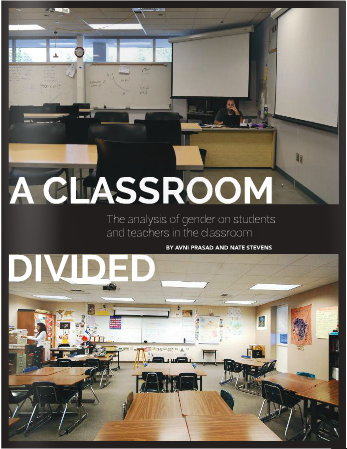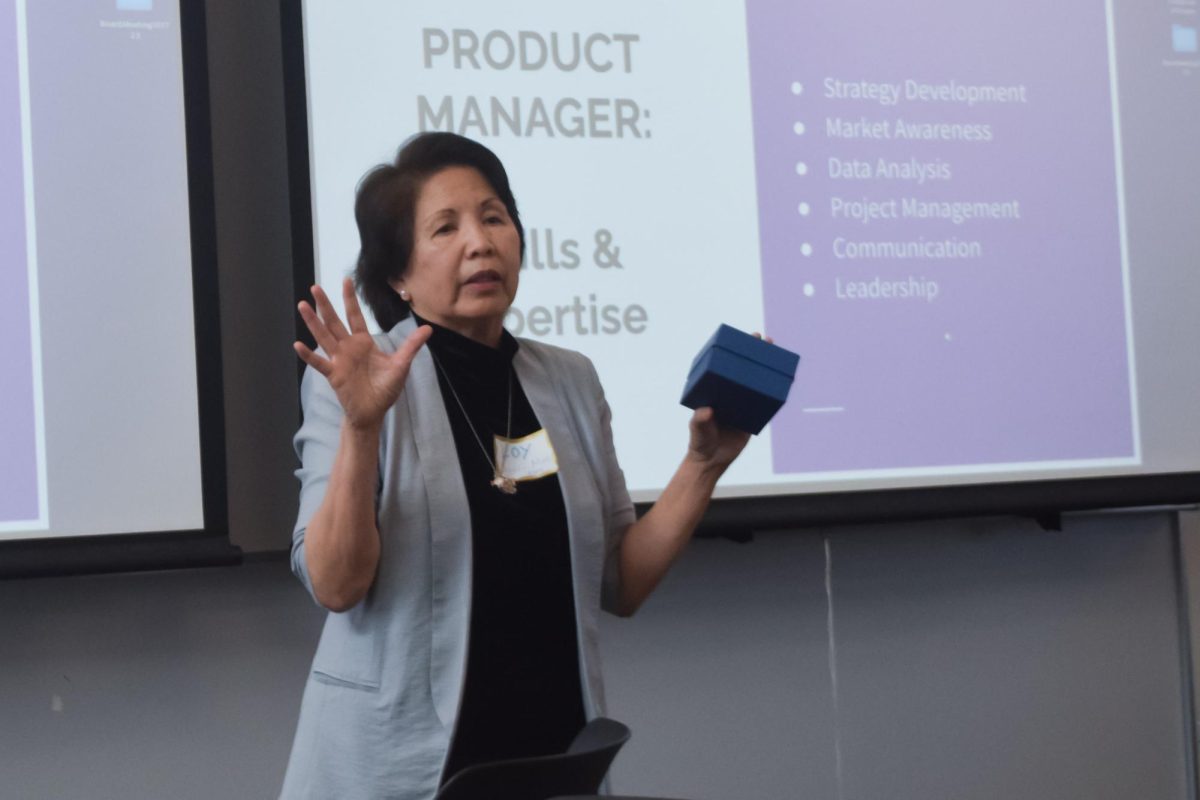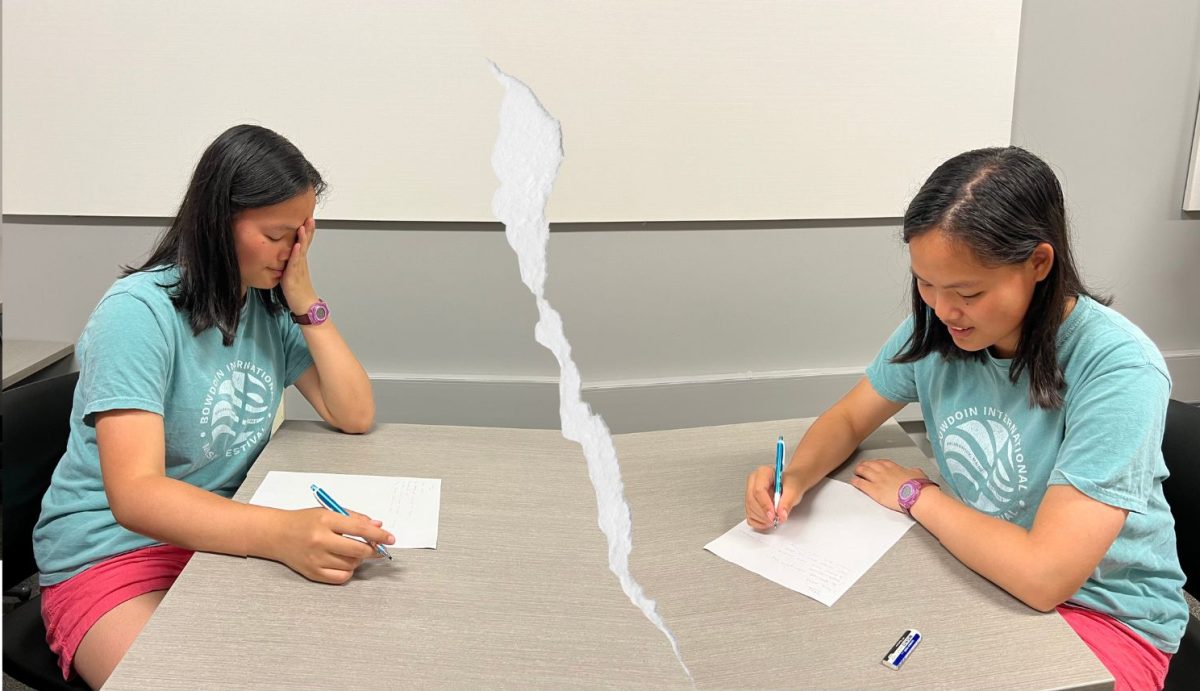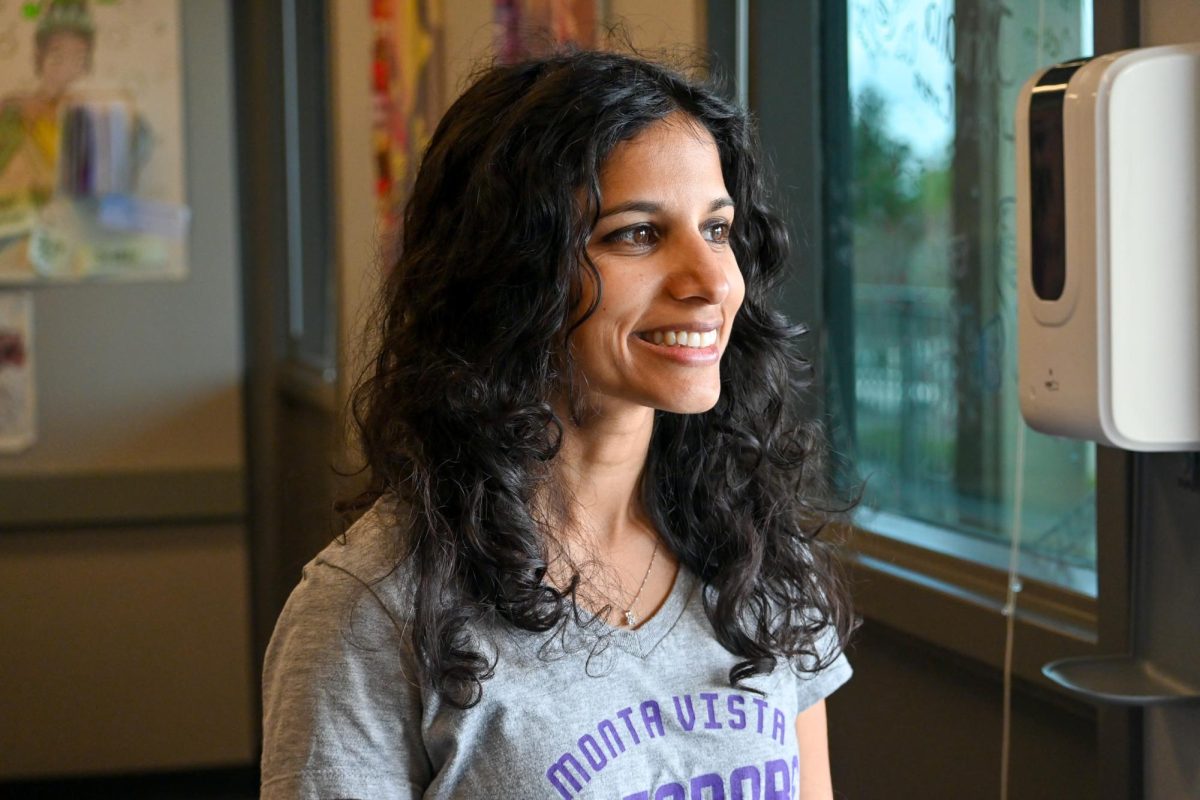Two Years ago, math teacher Kathleen Collins stood outside her classroom door ushering her freshmen into Geometry. She watched with a smile as her former female students marched over to Scott DeRuiter and Jon Stark’s AP Calculus BC class.
In her head, she knew this was the first time there would be more girls than boys in Calculus BC.
“There’s something that happens to women around 8th grade where all of sudden they start thinking that they are not as good at Math and Science as boys,” Collins said. “The further we get in the difficulty of Math, [the] more girls start to drop off.”
But, that year, 2014, showed progress. In 2012, Collins had taught three Algebra 2 Trigonometry classes, compared to her two current trigonometry classes. And as Collins watched the young women walk by, she hoped that her influence as a strong female role model may have influenced the increase in the number of girls in calculus that year.
 A 2006 study, conducted by Stanford Professor Thomas Dee, suggests student gender inequality may be related to teacher gender inequality. The study concluded that students thrived more so in classes taught by a teacher of the same gender, both for boys and girls.
A 2006 study, conducted by Stanford Professor Thomas Dee, suggests student gender inequality may be related to teacher gender inequality. The study concluded that students thrived more so in classes taught by a teacher of the same gender, both for boys and girls.
As a math major in college, Collins was use to men dominating the class, and men allowing men to dominate the classroom. This, she said, was something that happened more with male teachers.
“Teachers fill this role model part,” Collins said. “And, as a teacher, you have the power to influence the classroom in a gender neutral way.”
FEMALE TEACHING S.T.E.M.
Before Debbie Frazier taught Computer Science, there were over 70 percent male students in the class. Frazier thought the two may have been linked, so when she became the first woman to teach programming, she started to collect data.
“I have always been very gender conscious,” Frazier said. “So through the years I taught, I took data on what the ratio of guys to girls was.”
It was always male dominated. Some years, it was three males to one female, others two to one. But the longer Frazier taught, the more the ratio started to get closer and closer to equal.
When Frazier left on maternity leave, the ratio reversed back: two males to one female, then slowly back to three to one. Frazier returned to teaching, and the ratio went back to how it was before she had left.
“It is hard to know where exactly the difference in numbers comes from,” Frazier said. “After talking to some [female] students, though, I would say it helped to have a female teacher to look at and ‘say, she get it, she’s successful, sheís been able to apply this. Maybe I can too.'”
Frazierís data raises the question: does the gender of a teacher have an impact on the students?
Jim Birdsong, a physics teacher, feels that the gender of a teacher does affect their students, especially in the case of female teachers teaching female students.
“I think that a female student would get more from a female physics teacher,” Birdsong said. “The way it’s male dominated now, and not a lot of females take it, the evidence is that thereís some sort of comfort level that’s not being met.”
Birdsong’s college engineering class was a “giant guy party” with four or five girls and hundreds of guys. He says he sees the same thing in the physics classes he teaches now at MVHS, with about one-third girls.
Birdsong hopes that the huge gender gap, seen especially in higher level S.T.E.M. courses, can be fixed with more females teaching these subjects.
“It seems that any sort of pressure is for females to be shunted towards the lower grades and the males towards the higher grades,” Birdsong said. “If I had wanted to teach Kindergarten, I would imagine I would have felt some [pressure].”
GENDER DISPARITY ACROSS EDUCATION LEVEL
The tendency for female teachers to teach lower grades of students can be seen both on a national level and here at MVHS.
Currently, at MVHS, there is one female physics teachers and one female computer science teacher, and out of the eighteen math teachers, seven are female. Yet to the contrary, there are no male foreign language teachers, and only three male language arts teachers out of twenty.
Collins believes this is because of the nurturing needed in low levels of education.
“Women are raised to be nurturers, while men are raised to be more like conquerors,” Collins said. “This idea of a woman as a nurturer, like that is suppose to be something in our DNA, we get filtered in these roles of elementary school teachers.”
A national population survey in 2007 found that males make up just 2.3 percent of pre-K and kindergarten teachers, 18.3 percent of the elementary and middle school teacher population, and 42 percent of the high school level teaching staff.
At MVHS, the numbers are slightly lower with only 41 percent of male high school teachers. However, MVHS neighbor’s Lincoln Elementary School has more extreme numbers: there is only one full-time male teacher on campus.
“At that younger age, you need a nurturer presumably to more successful at managing people,” Frazier said. “There are a lot of studies out there about gender behavior, but I have met plenty of exceptions to the rule.”
GENDER DISCOURSE IN CLASSROOMS
Vennessa Nava, an English teacher, thinks that the patterns of gendered teaching may involve much more than just the gender of a teacher.
“We run a danger of essentializing the gender of a teacher, and maybe it’s part of their personality that people respond to,” Nava said. “But I think there also is something in terms of the way we perform our genders that we do sometimes fall into some stereotypical behavior.”
While individual personality does play a part in a teacherís influence, there is a continuous cycle of gender segregation, among subjects and grade levels, that perhaps is due to the guidelines that society constructs for each gender.
“My freshman were just saying the other day in a class discussion: the man is supposed to make a lot of money” Nava said. “These [opinions] aren’t coming from nowhere; it’s in the fabric of our society and we are just influenced by it.”
As Nava believes, the biases that freshman come into high school with are enforced by the societal roles that people have fallen into, and because of this, it is impossible to be completely free of them.
“We can’t calculate how much [these biases] have an effect on our own lives,” Nava said. “And because of this, there is a disconnect between theory and practice.”
Collins remembers questioning her intelligence in college as she sat in math classes dominated by men. She remembers thinking she wasnít good enough in those classes. Today, in her math classes, Collins makes a conscious effort to make sure boys aren’t dominating the conversations and girls get the attention they deserve.
“We have to be careful not drop off girls at the bus stops along the corner,” Collins said. “We need to make sure we have a good representation [of female teachers] in not only Calc. BC but also Algebra 2 Trigonometry, Precalc. Honors. We need to make sure [the girls] stay for the whole ride.”




























